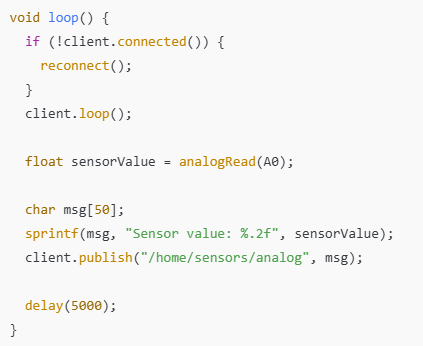
The Internet of Things (IoT) is transforming how we interact with the physical world by enabling real-time data collection, monitoring, and automation. At the heart of many IoT projects lies the Arduino platform, known for its flexibility and ease of use. One of the most critical tasks in any IoT setup is sending sensor data to the cloud for visualization, analysis, and further action.
In this guide, we’ll walk you through two of the most popular methods to connect your Arduino projects to the cloud: ThingSpeak and MQTT. ThingSpeak is ideal for simple data storage and visualization, while MQTT offers lightweight, real-time communication for scalable systems. We’ll explore both approaches in depth, complete with wiring diagrams, sample code, performance tips, and security best practices.
Whether you’re a beginner experimenting with DHT11 sensors or an advanced user building a production-ready system, this guide will help you harness the full potential of Arduino in your IoT journey.
One of the main functions of the Internet of Things (IoT) is gathering data from sensors and sending it to the cloud for analysis, display, and action. There are two well-liked approaches for Arduino-based projects: ThingSpeak: A user-friendly cloud platform with features for visualization.
MQTT: A real-time, lightweight messaging
system that allows for scalable, adaptable
communication. Both approaches are thoroughly examined in this guide, which includes principles, thorough wiring, code optimization, security advice, and performance adjustments.
Hardware: Arduino (ESP8266, ESP32, Mega, Nano, Uno)
Wi-Fi Module (ESP-01 with Arduino Uno or
ESP8266 NodeMCU suggested)
Sensors: any analog sensor (LM35, MQ-2,
LDR) or DHT11/DHT22 Using a breadboard and jumpers Logic level converter (optional) if connecting a 3.3V ESP to a 5V Arduino
The Arduino IDE software Libraries: ESP8266WiFi.h
ThingSpeak.h
PubSubClient.h Libraries tailored to particular sensors
(e.g., DHT.h)
Using the ESP8266/NodeMCU directly:

Important:
WiFi.status () should always be checked before
transferring any data. Add auto-reconnect code
for stability.
Sensor data can be uploaded to ThingSpeak using HTTP POST or GET requests.
a) Configuring ThingSpeak Create a ThingSpeak account. Make a brand-new channel. Turn on fields, such as Field1 = Temperature. Make a copy of the Write API Key.
b) Full Arduino Sketch (ThingSpeak + DHT11)



c) Production Notes:
information. Sending in batches lowers connection overhead.
Data Transmission MQTT is a publish/subscribe mechanism.
Data is published to a topic by Arduino. Subscribers receive the data from a server
(broker).





Make use of WPA2-secured Wi-Fi. Choose MQTT (mqtts on port 8883) over TLS. Verify clients using their login and password. Reduce the vulnerability of API keys (for ThingSpeak).


Prior to shipping, always verify sensor readings. Keep an eye out for connection failures, particularly with MQTT. Reduce the data rate when using mobile networks. For unsupervised IoT devices, use watchdog timers. Before switching to cloud services, test on a local broker.
Depending on the objectives of your IoT project, ThingSpeak and MQTT are both great options. When you want simple storage and fast graphs, use ThingSpeak. When you require scalable, real-time communication, use MQTT. Gaining proficiency in both will boost your Arduino IoT abilities
I may add the following extras for you:
Indian Institute of Embedded Systems – IIES